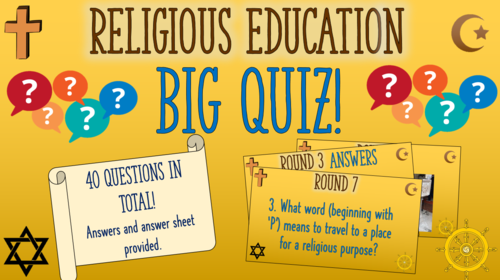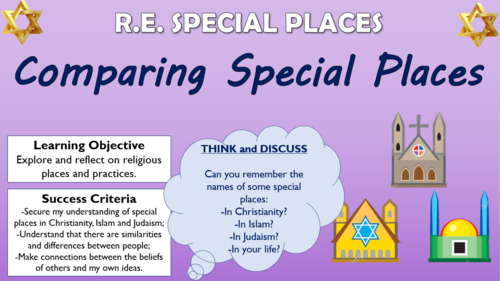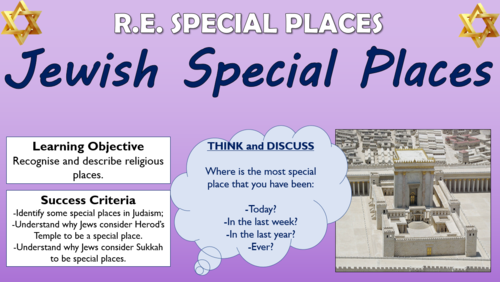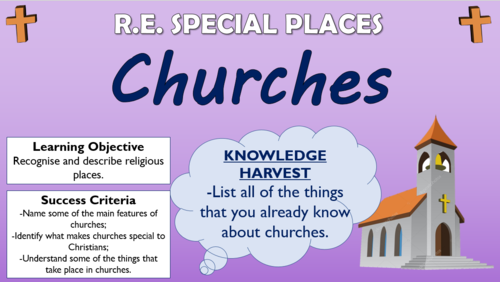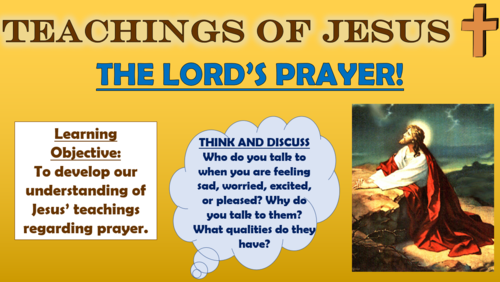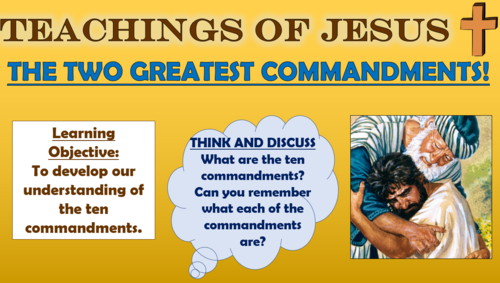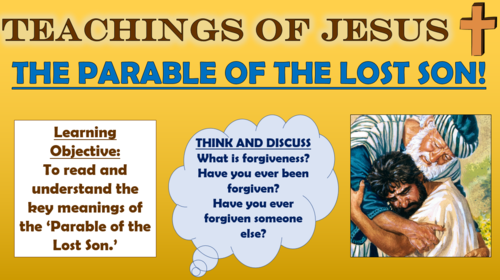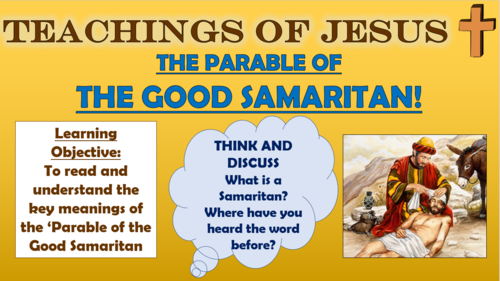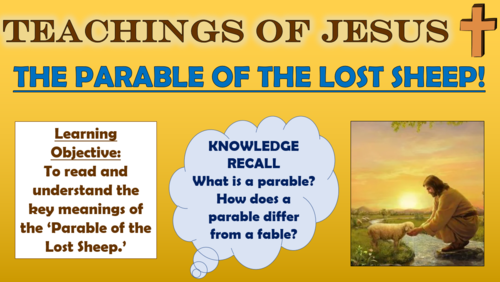
3k+Uploads
1898k+Views
2231k+Downloads
Religious education

Hajj - The Fifth Pillar of Islam!
In this engaging and comprehensive lesson, students are introduced to the fifth pillar of Islam - Hajj, the annual pilgrimage to the city of Makkah.
Children learn through collating their collective prior knowledge, understanding where Makkah is and why it is holy, learning key facts about the rules and process of Hajj and demonstrating their understanding through various tasks, including explaining the process of Hajj through a storyboarding template. They also consider their own personal spirituality, discussing concepts such as perseverance and respect.
The lesson is tried and tested, and is easy for teachers and students to follow. It contains a comprehensive 17-slide Powerpoint which offers a step-by-step guide throughout the lesson. A reading about the Hajj process is also provided, in addition to the template for the main activity (in both Word and PDF).
In the past, I have used this lesson with children in upper Key Stage 2 (years 5 and 6). The key learning is aligned with regional expectations for RE, and also the content prescribed by most diocese regions. All images are licensed for commercial use, and are cited on the final slide.

Sawm - The Fourth Pillar of Islam!
In this engaging and comprehensive lesson, students are introduced to the fourth pillar of Islam - Sawm, the act of fasting during the period of Ramadan.
Children learn through collating their collective prior knowledge, learning key facts, watching an interesting video (hyperlinked) and demonstrating their understanding through various tasks, including designing their own Iftar plate. They also consider their own personal spirituality, discussing concepts such as self-discipline and control.
The lesson is tried and tested, and is easy for teachers and students to follow. It contains a comprehensive 17-slide Powerpoint which offers a step-by-step guide throughout the lesson. The template is also provided for the Iftar task (in both Word and PDF). Challenge activities are provided in order to enrich learning for higher-attaining learners.
In the past, I have used this lesson with children in upper Key Stage 2 (years 5 and 6). The key learning is aligned with regional expectations for RE, and also the content prescribed by most diocese regions. All images are licensed for commercial use, and are cited on the final slide.

Zakah - The Third Pillar of Islam!
In this engaging and comprehensive lesson, students are introduced to the third pillar of Islam - Zakah.
Children learn through collating their collective prior knowledge, watching an interesting video (hyperlinked) and answering comprehension questions about Zakah. They then develop their understanding by learning about why Muslims give Zakah and how it benefits others, before comparing these ideas with their own personal views on generosity and charity.
The lesson is tried and tested, and is easy for teachers and students to follow. It contains a comprehensive 18-slide Powerpoint which offers a step-by-step guide throughout the lesson. Challenge activities are provided in order to enrich learning for higher-attaining learners.
In the past, I have used this lesson with children in upper Key Stage 2 (years 5 and 6). The key learning is aligned with regional expectations for RE, and also the content prescribed by most diocese regions. All images are licensed for commercial use, and are cited on the final slide.

Salah - The Second Pillar of Islam!
In this engaging and comprehensive lesson, students are introduced to the second pillar of Islam - Salah.
Children learn through collating their collective prior knowledge, watching an interesting video (hyperlinked) and answering comprehension questions about the Salah. They then develop their understanding by learning about the daily prayer routine and the ‘wudu’ (washing ritual).
The lesson is tried and tested, and is easy for teachers and students to follow. It contains a comprehensive 17-slide Powerpoint which offers a step-by-step guide throughout the lesson, in addition to the worksheet template for the creative ‘routines’ activity (in both Word and PDF). Challenge activities are provided in order to enrich learning for higher-attaining learners.
In the past, I have used this lesson with children in upper Key Stage 2 (years 5 and 6). The key learning is aligned with regional expectations for RE, and also the content prescribed by most diocese regions. All images are licensed for commercial use, and are cited on the final slide.

Shahada - The First Pillar of Islam!
In this engaging and comprehensive lesson, students are introduced to the first pillar of Islam - the Shahada.
Children learn through collating their collective prior knowledge, watching an interesting video (hyperlinked) and answering comprehension questions about the Shahada. They then link this knowledge to their own personal spirituality, considering the important ‘pillars’ and intentions that are important to them and their communities.
The lesson is tried and tested, and is easy for teachers and students to follow. It contains a comprehensive 16-slide Powerpoint which offers a step-by-step guide throughout the lesson, in addition to the worksheet template for the creative ‘pillars of my community’ activity (in both Word and PDF). Challenge activities are provided in order to enrich learning for higher-attaining learners.
In the past, I have used this lesson with children in upper Key Stage 2 (years 5 and 6). The key learning is aligned with national expectations for RE, and also the content prescribed by most diocese regions. All images are licensed for commercial use, and are cited on the final slide.

Religious Education Big Quiz! (KS2/KS3)
This wide-ranging and comprehensive RE quiz contains 40 questions. It was originally designed for high attaining year 5/6 classes as an end of term activity, but may also be suitable for lower KS3 groups.
Questions are split into 8 rounds of 5 questions each. To add variety and promote engagement, there are a range of regular, true or false, multiple choice and picture questions. Answers are given at the end of each round. The rounds included are:
1.) Churches
2.) Jesus Christ
3.) Islam
4.) Buddhism
5.) Judaism
6.) Hinduism
7.) Religion around the World
8.) Final Round Lucky Dip
A team answer sheet is included, provided in both Word and PDF.
Bundle Sale

KS1 RE - Special Places Big Bundle!
This bundle contains all of the special places lessons PLUS the knowledge organiser!
The series of interesting and engaging lessons aims to equip children with a solid foundation understanding of special places in different religions and their own lives. Children learn about religon, considering special places in Christianity (churches), Islam (mosques) and Judaism (synagogues and sukkah). They also learn from religion, reflecting upon places that are special to themselves.
The lessons included are:
My Special Places
Christianity - Churches
Islam - Mosques
Judaism - Synagogues and Sukkah
Comparing Special Places
In each lesson, the learning is guided by a clear and colourful PowerPoint presentation, which guides students through logical, step-by-step activities. There are also clear hyperlinks for the video resources, and engaging, well-structured worksheets for the activities.
In the past, I have used these lessons with children from across years 1-2 - the key learning is aligned with curriculum expectations for RE, and also the content prescribed by most diocese regions. All images are licensed for commercial use.
Bundle Sale

KS1 RE - Special Places - Lesson Bundle!
This series of interesting and engaging lessons aims to equip children with a solid foundation understanding of special places in different religions and their own lives. Children learn about religon, considering special places in Christianity (churches), Islam (mosques) and Judaism (synagogues and sukkah). They also learn from religion, reflecting upon places that are special to themselves.
The lessons included are:
My Special Places
Christianity - Churches
Islam - Mosques
Judaism - Synagogues and Sukkah
Comparing Special Places
In each lesson, the learning is guided by a clear and colourful PowerPoint presentation, which guides students through logical, step-by-step activities. There are also clear hyperlinks for the video resources, and engaging, well-structured worksheets for the activities.
In the past, I have used these lessons with children from across years 1-2 - the key learning is aligned with curriculum expectations for RE, and also the content prescribed by most diocese regions. All images are licensed for commercial use.

KS1 RE - Comparing Special Places!
In this engaging lesson, students develop their understanding of special places in Christianity, Islam and Judaism. It was originally taught as a part of an RE unit on ‘Special Places’ and so assumes some prior knowledge of churches and mosques (I have uploaded the prior lessons on this). The lesson introduces synagogues.
The learning is guided by a clear and colourful PowerPoint presentation, which guides students through the following step-by-step journey:
-Knowledge recall - gauging what children already know about special places in Christianity and Islam;
-Being introduced to synagogues and their key features;
-Using a provided worksheet/ template to find similarities and differences between churches, mosques and synagogues;
-Creating their own special places;
-Completing a plenary activity to assess their understanding;
-Self-reflecting on the extent to which they feel they have met the learning objective.
This resource pack includes the comprehensive PowerPoint presentation (23 slides) and the worksheet (provided in both Word and PDF). There is everything that you need here to teach the lesson, but you may wish to have some cardboard, shoeboxes etc. available for the creative task.
In the past, I have used this lesson with children from across Key Stage 1 - the key learning is aligned with curriculum expectations for RE, and also the content prescribed by most diocese regions. All images are licensed for commercial use.

KS1 RE - Jewish Special Places!
In this engaging lesson, students develop their understanding of special places in Judaism. It was originally taught as a part of an RE unit on ‘Special Places.’
The learning is guided by a clear and colourful PowerPoint presentation, which guides students through the following step-by-step journey:
-Knowledge recall - gauging what children already know about special places in other religions;
-Being introduced to Herod’s Temple and the Western Wall, learning basic facts about where they are/ what they mean to Jews;
-Watching an age-appropriate, engaging video about Hannukah, and how it is related to events from the past at Herod’s Temple;
-Using these ideas to understand why the Western Wall is so sacred for Jews;
-Learning about Sukkah, including their main features and why they are built;
-Creating their own special places;
-Completing a plenary activity to assess their understanding;
-Self-reflecting on the extent to which they feel they have met the learning objective.
This resource pack includes the comprehensive PowerPoint presentation (23 slides) and the hyperlink for the video. There is everything that you need here to teach the lesson.
In the past, I have used this lesson with children from across Key Stage 1 - the key learning is aligned with curriculum expectations for RE, and also the content prescribed by most diocese regions. All images are licensed for commercial use.

KS1 RE - Special Places - Mosques!
In this engaging lesson, students develop their understanding of churches and what happens in them. It was originally taught as a part of an RE unit on ‘Special Places.’
The learning is guided by a clear and colourful PowerPoint presentation, which guides students through the following step-by-step journey:
-Knowledge harvesting what children already know about mosques, and what they would like to find out;
-Learning the basics about Mosques, before reading and comprehending ‘An Important Job for Qaswa the Camel’ - an age-appropriate story about the first mosque;
-Studying a number of images of different features in mosques and discussing why each feature is important;
-Understanding what makes mosques special places to Muslims, and finding similarities and differences between mosques and churches;
-Completing a plenary activity to assess their understanding;
-Self-reflecting on the extent to which they feel they have met the learning objective.
This resource pack includes the comprehensive PowerPoint presentation (24 slides) and the story for the comprehension activity (provided in Word and PDF). There is everything that you need here to teach the lesson.
In the past, I have used this lesson with children from across Key Stage 1 - the key learning is aligned with curriculum expectations for RE, and also the content prescribed by most diocese regions. All images are licensed for commercial use.

KS1 RE - Special Places - Churches!
In this engaging lesson, students develop their understanding of churches and what happens in them. It was originally taught as a part of an RE unit on ‘Special Places.’
The learning is guided by a clear and colourful PowerPoint presentation, which guides students through the following step-by-step journey:
-Knowledge harvesting what children already know about churches, and what they would like to find out;
-Studying a number of images of different features in churches (provided) and using a template to record their findings;
-Discussing and identifying what events take place in churches, and how these are commemorated;
-Understanding that churches are special places to Christians, and that we should behave respectfully when we are in/ around them;
-Completing a plenary activity to assess their understanding;
-Self-reflecting on the extent to which they feel they have met the learning objective.
This resource pack includes the comprehensive PowerPoint presentation (23 slides) and the template & pictures for the main activity (provided in Word and PDF). There is everything that you need here to teach the lesson.
In the past, I have used this lesson with children from across Key Stage 1 - the key learning is aligned with curriculum expectations for RE, and also the content prescribed by most diocese regions. All images are licensed for commercial use.

KS1 RE - My Special Places!
In this engaging lesson, students consider the places that are important to them. The lesson serves as a foundation for children’s later learning about places that are special to people of different faiths.
The learning is guided by a clear and colourful PowerPoint presentation, which guides students through the following step-by-step journey:
-Discussing the differences between a house and a home;
-Considering what features make a home a special place to many people;
-Identifying the things that make their own homes a special place;
-Brainstorming other places that people may consider as special, e.g. their town or their school;
-Understanding that different people are individuals, and have their own opinions of places that are special;
-Completing a plenary activity to assess their understanding;
-Self-reflecting on the extent to which they feel they have met the learning objective.
This resource pack includes the comprehensive PowerPoint presentation (17 slides) and the template for the main special places activity (provided in Word and PDF). There is everything that you need here to teach the lesson.
In the past, I have used this lesson with children from across Key Stage 1 - the key learning is aligned with curriculum expectations for RE, and also the content prescribed by most diocese regions. All images are licensed for commercial use.
Bundle Sale

Teachings of Jesus - Big Bundle!
This bundle contains all 7 of the ‘Teachings of Jesus’ lessons, in addition to the ‘Teachings of Jesus’ knowledge organiser!
This series of interesting and engaging lessons aims to equip children with a solid foundation understanding of the life and teachings of Jesus Christ. The lessons offer a broad outline of how, where, and when Jesus Christ preached, and each lesson is dedicated to one of his main teachings - including four of his parables. In addition to the knowledge organiser, the bundle contains the following lessons:
Key Facts About Jesus Christ
The Parable of the Sower
The Parable of the Lost Sheep
The Parable of the Good Samaritan
The Parable of the Lost Son
The Two Greatest Commandments
The Lord’s Prayer
In each lesson, the learning is guided by a clear and colourful PowerPoint presentation, which guides students through logical, step-by-step activities. There are also clear hyperlinks for the video resources, and engaging, well-structured worksheets for the activities.
In the past, I have used these lessons with children from across years 4-6 - the key learning is aligned with curriculum expectations for RE, and also the content prescribed by most diocese regions. All images are licensed for commercial use.
Bundle Sale

Teachings of Jesus - Lesson Bundle!
This series of interesting and engaging lessons aims to equip children with a solid foundation understanding of the life and teachings of Jesus Christ. The lessons offer a broad outline of how, where, and when Jesus Christ preached, and each lesson is dedicated to one of his main teachings - including four of his parables. The bundle contains the following lessons:
Key Facts About Jesus Christ
The Parable of the Sower
The Parable of the Lost Sheep
The Parable of the Good Samaritan
The Parable of the Lost Son
The Two Greatest Commandments
The Lord’s Prayer
In each lesson, the learning is guided by a clear and colourful PowerPoint presentation, which guides students through logical, step-by-step activities. There are also clear hyperlinks for the video resources, and engaging, well-structured worksheets for the activities.
In the past, I have used these lessons with children from across years 4-6 - the key learning is aligned with curriculum expectations for RE, and also the content prescribed by most diocese regions. All images are licensed for commercial use.

Teachings of Jesus - The Lord's Prayer!
In this engaging lesson, students develop their understanding of Christian prayer. The lesson places a particular emphasis upon the Lord’s Prayer.
The learning is guided by a clear and colourful PowerPoint presentation, which guides students through the following step-by-step journey:
-Considering who we confide in when we need to talk to someone, and understanding that Christians can confide in God;
-Knowledge recall - remembering key facts about Jesus’ life and teaching;
-Watching an engaging, age-appropriate video about how Christians pray and demonstrating understanding through answering questions;
-Using the worksheet provided to read and comprehend the Lord’s prayer, answering the key questions provided;
-Self-reflecting on how the teachings may influence their own lives;
-Considering the extent to which they feel they have met the learning objective.
The resource pack includes everything you need to teach the lesson, including the comprehensive PowerPoint presentation and the ‘Lord’s Prayer’ worksheet (provided in both Word and as a PDF). Just download and teach!
In the past, I have used this lesson with children from across Key Stage 2 with minor adaptations for age - the key learning is aligned with curriculum expectations for RE, and also the content prescribed by most diocese regions. All images are licensed for commercial use.

Teachings of Jesus - The Two Greatest Commandments!
In this engaging lesson, students develop their understanding of the ten commandments. They particularly consider what Jesus communicated as ‘the two greatest commandments’ (‘Love God’ and ‘Love thy Neighbour’).
The learning is guided by a clear and colourful PowerPoint presentation, which guides students through the following step-by-step journey:
-Recalling each of the ten commandments and translating them into modern English;
-Knowledge recall - remembering key facts about Jesus’ life and teaching;
-Ranking the commandments in order of those that they feel are most important;
-Reading and discussing Jesus’ lesson on the most important commandments;
-Considering the messages that they can take for their own lives from this message;
-Creating 10 commandments for the modern world;
-Self-reflecting on the extent to which they feel they have met the learning objective.
The resource pack includes everything you need to teach the lesson, including the comprehensive PowerPoint presentation and the Bloom’s Taxonomy worksheet (provided in both Word and as a PDF). Just download and teach!
In the past, I have used this lesson with children from across Key Stage 2 with minor adaptations for age - the key learning is aligned with curriculum expectations for RE, and also the content prescribed by most diocese regions. All images are licensed for commercial use.

Teachings of Jesus - The Parable of the Lost Son!
In this engaging lesson, students read and interpret ‘The Parable of the Lost Son’ (also known as the Parable of the Prodigal Son).
The learning is guided by a clear and colourful PowerPoint presentation, which guides students through the following step-by-step journey:
-Defining what ‘forgiveness’ means;
-Knowledge recall - remembering key facts about Jesus’ life and teaching;
-Understanding how it can be difficult, but important, to forgive;
-Watching an engaging, age-appropriate video of the parable;
-Demonstrating understanding of the parable through Bloom’s Taxonomy-style activities, including defining, remembering, inferring, sequencing, analysing, applying and creating activities;
-Considering the messages that they can take for their own lives from this parable;
-Self-reflecting on the extent to which they feel they have met the learning objective.
The resource pack includes everything you need to teach the lesson, including the comprehensive PowerPoint presentation and the Bloom’s Taxonomy worksheet (provided in both Word and as a PDF). Just download and teach!
In the past, I have used this lesson with children from across Key Stage 2 with minor adaptations for age - the key learning is aligned with curriculum expectations for RE, and also the content prescribed by most diocese regions. All images are licensed for commercial use.

Teachings of Jesus - The Parable of the Good Samaritan!
In this engaging lesson, students read and interpret ‘The Parable of the Good Samaritan.’
The learning is guided by a clear and colourful PowerPoint presentation, which guides students through the following step-by-step journey:
-Knowledge recall - remembering key facts about Jesus’ life and teaching;
-Defining the meaning of the word ‘Samaritan’ and gaining a basic understanding of the historical relationship between Jews and Samaritans;
-Reading and interpreting the parable through comprehension questions, and deciphering its key meanings;
-Considering the messages that they can take for their own lives from this parable;
-Researching how some charities have continued in the spirit of this parable today;
-Self-reflecting on the extent to which they feel they have met the learning objective.
The resource pack includes everything you need to teach the lesson, including the comprehensive PowerPoint presentation and the parable worksheet (provided in both Word and as a PDF). Just download and teach!
In the past, I have used this lesson with children from across Key Stage 2 with minor adaptations for age - the key learning is aligned with curriculum expectations for RE, and also the content prescribed by most diocese regions. All images are licensed for commercial use.

Teachings of Jesus - The Parable of the Lost Sheep!
In this engaging lesson, students read and interpret ‘The Parable of the Lost Sheep.’
The learning is guided by a clear and colourful PowerPoint presentation, which guides students through the following step-by-step journey:
-Knowledge recall - remembering key facts about Jesus’ life and teaching;
-Discussing why Jesus’ parables continue to give important messages;
-Watching an engaging, age-appropriate video of the parable;
-Interpreting the parable through comprehension questions, and deciphering its key meanings;
-Using the storyboard template provided to demonstrate their understanding of the parable and its morals;
-Considering the messages that they can take for their own lives from this parable;
-Self-reflecting on the extent to which they feel they have met the learning objective.
The resource pack includes everything you need to teach the lesson, including the comprehensive PowerPoint presentation and the storyboard template (provided in both Word and as a PDF). Just download and teach!
In the past, I have used this lesson with children from across Key Stage 2 with minor adaptations for age - the key learning is aligned with curriculum expectations for RE, and also the content prescribed by most diocese regions. All images are licensed for commercial use.






